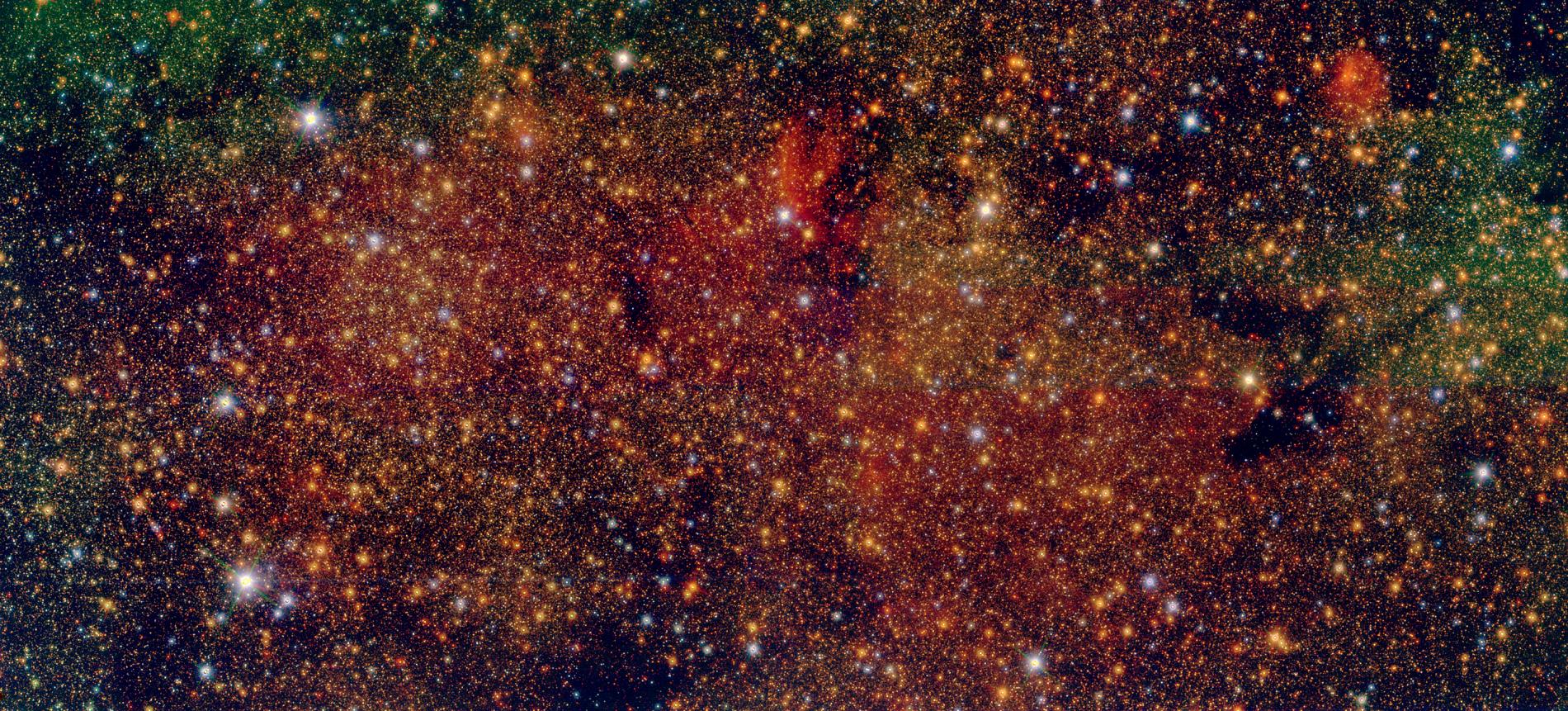First look at the prolific stellar factory at the center of the Milky Way
A study, part of the GALACTICNUCLEUS project, coordinated by the Institute of Astrophysics of Andalusia (IAA-CSIC), reveals the history of star formation in the center of our galaxy
The dense central regions of our galaxy, the Milky Way, are a natural laboratory for the study of rapid star formation, a common phenomenon in galaxies, especially in the first billion years of the history of the universe. However, the high density of stars in this region has prevented its study in detail. Now, a study published in Nature Astronomy using data from the GALACTICNUCLEUS high-resolution infrared survey has allowed, for the first time, to reconstruct the history of star formation in the galactic center. Also, it has revealed that stars did not form in massive and tightly bound clusters, but in isolated stellar associations that have spread out over the last few million years.
“Our Milky Way is not a very productive galaxy. As a whole, the stars it forms in a year amount to no more than a few solar masses”, says Francisco Nogueras-Lara, a researcher at the Max Planck Institute for Astronomy (MPIA) who heads the work. “In contrast, the so-called starburst galaxies, which are much more productive, give rise to tens or even hundreds of solar masses of stars per year over episodes that last a few million years. And more generally, about ten billion years ago, that kind of high productivity seems to have been the norm among galaxies."
Although it may seem that our unproductive galaxy is not good for studying starbursts, in the regions that correspond to the 1300 light years around the central black hole, the rates of star formation in the last hundred million years have been ten times higher than average; thus, the core of our galaxy is as productive as a starburst galaxy, or as the hyperproductive galaxies of ten billion years ago.

THE ELUSIVE STELLAR POPULATION OF THE GALACTIC CENTER
The centre of our galaxy, however, poses two observational challenges: on the one hand, it is hidden behind copious amounts of dust that prevent it from being seen, which was solved by using infrared, millimetre-wave and radio observations, and on the other hand, due to the overcrowding of the stars, which makes it impossible to distinguish them and which only made it possible to resolve very massive and bright individual stars. Thus, until recently only 10% of the stellar mass of the galactic center had been detected, so it was unknown what the stars in the center of the Milky Way were like.
To resolve this issue, GALACTICNUCLEUS project was developed, led by researcher Rainer Schödel from the Institute of Astrophysics of Andalusia (IAA-CSIC). This is a survey that made use of the HAWK-I infrared camera on the Very Large Telescope (VLT) of the European Southern Observatory and that covered a total area of 64,000 square light years around the galactic center. The project has made it possible to obtain individual data for three million where previously only a handful of stars had been mapped.
These new data have made it possible to confirm that the region of the galactic center known as Sagittarius B1 was different, as well as to study its stars in detail. "Although even this high-resolution study only allowed us to distinguish giant stars, we were able to reconstruct the luminosity of each star and the intrinsic brightness, corresponding to the amount of light that a star emits per unit of time", says Nogueras-Lara (MPIA).
Particularly interesting was the statistical distribution of the luminosity of these stars. For stars that form at the same time, that luminosity distribution changes over time in a regular and predictable way. In turn, this allows the approximate history of star formation to be deduced. The research team found that, indeed, there were several phases of star formation in Sagittarius B1: an older population that formed between two and seven billion years ago, and a large population of much younger stars, with just ten million years or even younger.
Although the newly discovered young stars are found in a specific region, their example suggests a more general mode of star formation in the galactic center: stars that are not born in massive clusters, but rather in more dispersed stellar associations, which then dissolve as they they orbit the galactic center on scales of several million years. That would explain why young stars in the galactic center can only be found by high-resolution surveys like the present work.
The presence of the oldest population of stars in Sagittarius B1 is also interesting. In the innermost regions of the galactic center there are stars older than seven billion years, but virtually no stars in the intermediate age range of two to seven billion years. This could indicate that star formation in the central region started in the innermost region and then spread to the outer regions. This inside-out mechanism for building the so-called nuclear disk, a disk made up of stars surrounding the galactic center, had already been observed in other galaxies. The new results indicate that the same thing could be happening in the central region of our galaxy.
F. Nogueras-Lara et al. "Detection of an excess of young stars in the Galactic center Sagittarius B1 region". Nature Astronomy, 25 August 2022
Instituto de Astrofísica de Andalucía (IAA-CSIC)
Unidad de Divulgación y Comunicación
Silbia López de Lacalle - sll[arroba]iaa.es - 958230676
https://www.iaa.csic.es
https://divulgacion.iaa.csic.es

